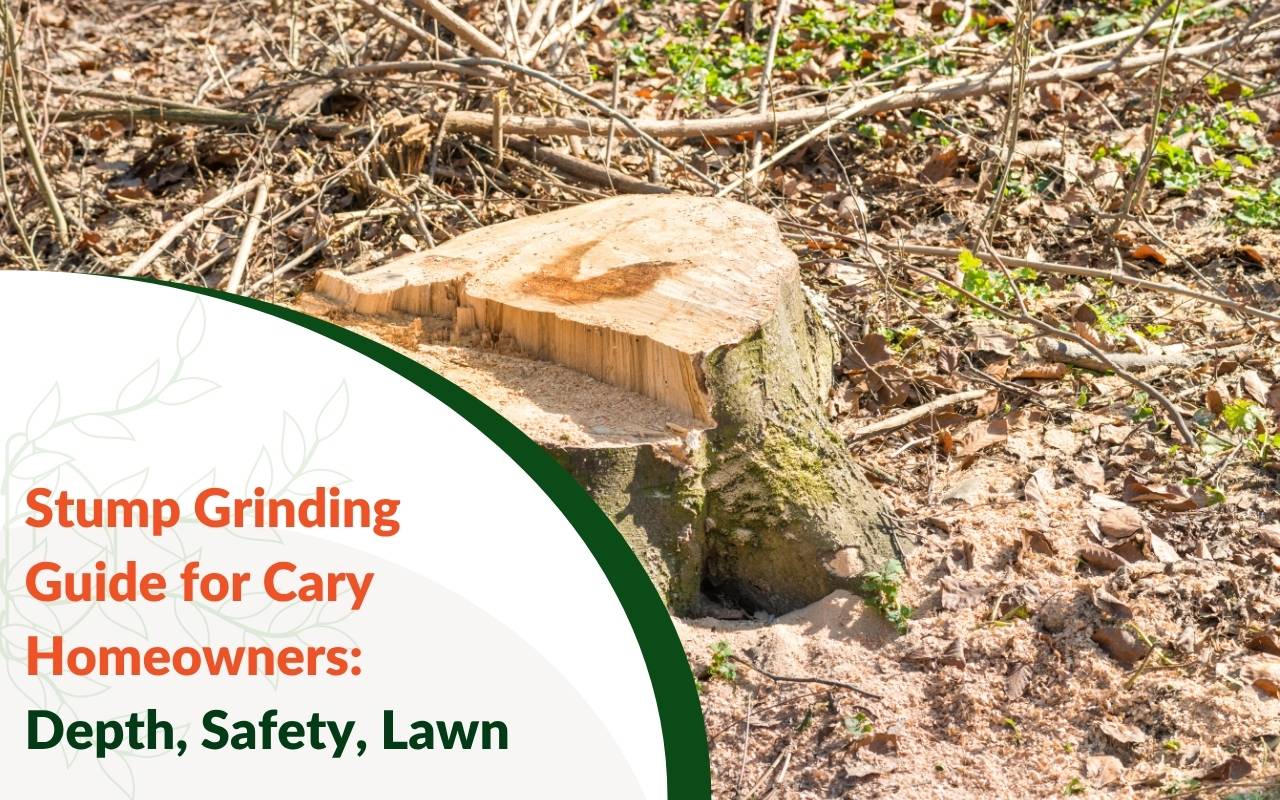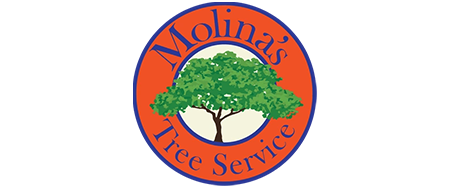
Transform your Cary landscape into a lush, stump-free haven with this comprehensive stump grinding guide for Cary homeowners. Navigating the process may seem daunting, but with the right knowledge, you can manage it smoothly. Whether deciding between stump grinding and removal or determining the proper depth, this resource covers every step. We’ll explore essential safety measures and seasonal insights so you can approach the task confidently. Afterward, you’ll even learn how to restore your lawn seamlessly once the work is done. With these expert tips, you can improve curb appeal and enjoy a vibrant outdoor space.
Stump Grinding vs. Stump Removal: Making the Right Choice
Choosing between stump grinding and removal depends on your yard goals. Understanding stump grinding vs stump removal pros and cons helps you make the right decision. Stump grinding uses a rotating cutting disk to chip wood below ground level. It’s less invasive, leaves the soil intact, and allows quick reseeding. Full removal extracts the root system entirely, which prevents regrowth but disturbs the surrounding area more. For homeowners focused on minimal disruption, stump grinding is often best. It’s faster, cleaner, and more efficient for small to medium stumps. On the other hand, if you plan to plant another tree or install structures, full removal may be worth considering.
- Stump grinding preserves your landscape’s balance
- Full removal clears roots completely but disturbs soil
- Choose based on time, budget, and landscaping plans
To explore more about improving your yard’s safety, visit our article on stump grinding services near Raleigh for a safer yard.
Optimal Depth for Stump Grinding: What You Need to Know
Understanding how deep stump grinding should go ensures long-term safety and lawn restoration. Most professionals recommend grinding four to six inches below ground, enough to prevent regrowth and trip hazards. Grinding deeper rarely adds benefits unless you plan construction over the spot. Shallow grinding risks sprouts or pest issues later. Always fill the area with soil afterward to match the lawn’s surface. This balanced approach helps you maintain a safe, level yard and promotes healthy regrowth.
- Grind 4–6 inches deep for standard yards
- Fill and level with topsoil for smooth results
- Deeper grinding suits future building projects
Ensuring Safety First: Tips for Working Near Utilities
Safety comes first when following this stump grinding guide for Cary homeowners. If you’re wondering, “Is stump grinding safe around utilities?”—the answer depends on preparation. Always check for underground utilities before starting. Contact your local mark-out service to locate gas, electric, water, and cable lines. Keep a safe distance from flagged areas and never skip this step. Wear protective gear, including gloves, goggles, and earplugs, to reduce risk. If a stump lies close to utilities, hire professionals equipped with specialized tools. With proper preparation, you’ll complete the job safely and efficiently.
- Always mark and avoid underground lines
- Use protective gear and clear your workspace
- Seek professional help for complex sites
Seasonal Considerations for Stump Grinding
Timing affects the success of your project. Knowing the best time of year to grind stumps can help you achieve cleaner and faster results. Late fall and early spring usually offer ideal soil conditions. Winter can freeze the ground, while summer’s dryness may cause excess dust. Choose mild weather for smoother grinding and easier cleanup. Monitor moisture levels and avoid working right after heavy rain. By scheduling carefully, you’ll protect your lawn and your equipment while ensuring steady progress throughout the process.
Restoring Your Lawn Post-Stump Removal: Best Practices
After grinding, restoring your lawn completes the transformation. Learning how to restore lawn after stump grinding ensures long-term curb appeal. Start by clearing wood chips and debris. Add quality topsoil to fill the hole, level it, and reseed using grass that matches your lawn. Keep the soil moist until new growth appears. A thin mulch or straw layer protects seeds from drying out. Within weeks, your lawn will regain its lush, unified appearance.
For extra assistance or to ensure proper restoration, reach out to our specialists through the contact page. Our Cary experts can help you achieve smooth, professional results.
Equipment Needed for Effective Stump Grinding
Using the right equipment makes all the difference. You’ll need a stump grinder sized for your job, plus safety gloves, goggles, and sturdy footwear. A shovel, rake, and wheelbarrow simplify cleanup. For multiple stumps, a wood chipper helps recycle debris. Renting gear from a reliable local shop saves time and ensures everything works correctly. Clean and maintain tools before returning or storing them to extend their lifespan.
DIY vs. Professional Stump Grinding Services: Pros and Cons
Homeowners often weigh DIY efforts against hiring pros. Doing it yourself saves labor costs and gives flexibility, but it demands time and strength. Professionals bring efficiency, expertise, and safety knowledge that minimize risks. They handle permits, utilities, and debris removal, offering peace of mind. When evaluating stump grinding vs stump removal pros and cons, consider your comfort with machinery, project size, and available time before deciding which approach suits you best.
Budgeting for Stump Grinding: Understanding the Costs
Project costs depend on stump size, access, and root complexity. Larger stumps or tight spaces require more labor or longer rentals. Additional expenses can include debris hauling, soil, and seed for restoration. Compare quotes carefully and confirm what’s included. Transparent budgeting helps you stay within limits while achieving clean, stump-free results.
Frequently Asked Questions About Stump Grinding
How deep should stump grinding go?
Grinding 4–6 inches below ground prevents regrowth while keeping soil level for easy reseeding and lawn repair.
Is stump grinding safe near utilities?
Yes, stump grinding is safe around utilities if underground lines are marked before starting. Always maintain safe distances and follow utility guidelines.
Can I rent a stump grinder myself?
Yes, small grinders work for minor projects. However, professional services are safer for large or multiple stumps.
When is the best time to grind stumps?
The best time of year to grind stumps is during late fall or early spring when soil is soft and moisture levels are ideal for efficient grinding and lawn restoration.
How do I restore my yard after stump grinding?
To restore your yard, clear debris, fill with topsoil, reseed, and water consistently until new grass covers the area evenly. Following proper steps on how to restore lawn after stump grinding ensures long-lasting results.
Troubleshooting Common Issues During Stump Grinding
Grinding challenges like hard roots or machine stalls are common. Work gradually in layers to prevent strain on equipment. If blades jam, stop and clear debris before continuing. For uneven results, rake and level between passes. Lightly wetting the area helps control dust. Stay patient and follow manufacturer instructions to avoid damage and ensure an even finish.
Transforming Your Cary Landscape with Stump Grinding
By following this stump grinding guide for Cary homeowners, you can reclaim your outdoor space safely and efficiently. Thoughtful preparation, the right tools, and proper timing yield the best results. Whether you choose DIY or professional help, your yard will thrive once stumps are gone. To schedule expert service or ask questions, connect with our team via the contact page and start transforming your landscape today.
